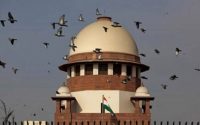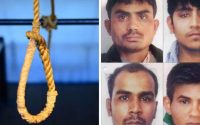$100 Website Offer
Get your personal website + domain for just $100.
Limited Time Offer!
Claim Your Website NowAyodhya Dispute: ASI report isn’t concrete proof, says Muslim side; top court junks theory
Source:- dnaindia.com
The Supreme Court, on Friday, told the Hindu and Muslim sides in the Ayodhya title suit case that archaeological evidence in the case cannot be discredited as it is largely based on inference and not direct evidence. The bench’s comment came after the Muslim side sought to dismiss the Archaeological Survey of India (ASI) report as an opinion.
Senior advocate Meenakshi Arora, arguing the suit on behalf of the Muslim side, submitted that the ASI report is based on an inferential study which cannot be conclusive in its finding of a grand Hindu temple underneath the disputed site. She read out evidence from eminent archaeologists, who had appeared in Allahabad High Court as witnesses on behalf of the Muslim side and gave a view contrary to ASI’s excavation report.
“Our witnesses are equally eminent in their own fields, similar to the ASI experts,” Arora said. “If such respectable people have taken a divergent view, can the ASI report be considered conclusive especially when there is no concrete evidence to support it other than hearsay and accounts of travellers?” She urged the Court to consider the list of experts presented by her as expert evidence under Section 45 of the Evidence Act.
But the bench comprising Chief Justice Ranjan Gogoi, Justices SA Bobde, DY Chandrachud, Ashok Bhushan, and S Abdul Nazeer did not buy the argument.
“Both sides have relied on evidence based on inference,” they said. “Obviously, there cannot be any direct eyewitness in this case. So we need to look at the evidence on both sides and see which is more valid and reasonable.”
Qualifying its comment, the bench added, “The inference drawn by ASI is an inference of a studied, cultivated and knowledgeable mind. This inference is based on enquiry and we have to test the validity of this inference.”
Arora then referred to Section 45 of the Evidence Act to suggest that their expert evidence is equally good to be relied upon and to outweigh ASI’s view. In response, the bench posed: “According to you, archaeology is not a science then how are you applying Section 45? In Section 45 it is written, ‘When the Court has to form an opinion upon a point of foreign law or of science or art, or as to the identity of handwriting, the opinions upon that point of persons specially skilled in such foreign law, science, or art are relevant facts. Such persons are called experts.”
Arora replied that though archaeology was not an exact science, it was a social science. “You should be relying more on the evidence presented by ASI as it is a court-commissioned study delegated under Order 26, Rule 10A of the Civil Procedure Code. This will have more evidentiary value,” the bench said.
Although the Muslim side promised to complete their arguments within this week, senior advocate Shekhar Naphade then took over from the Muslim side and his arguments were incomplete when the Court called it a day before 1 pm. According to Naphade, the Hindu side had in 1885 exhausted their right to build a temple by filing a suit. They could not re-agitate the same plea in a fresh suit when the issue has become res judicata (matter already judged/decided). He will continue with his arguments on Monday.



